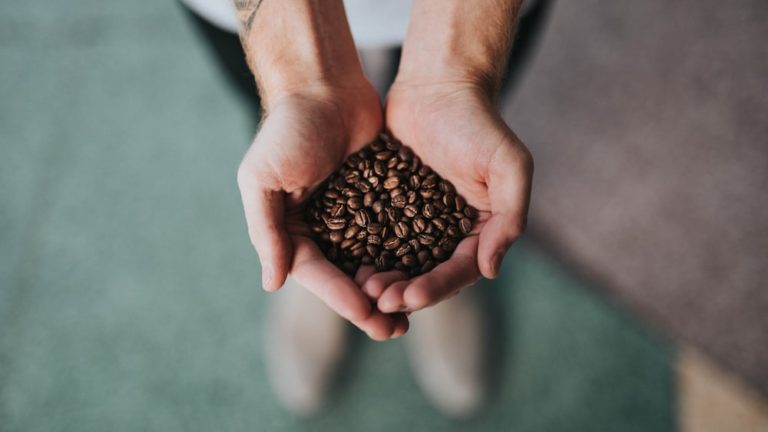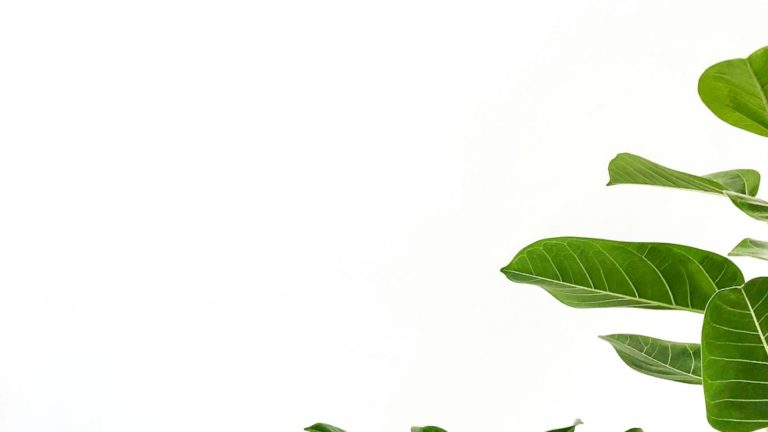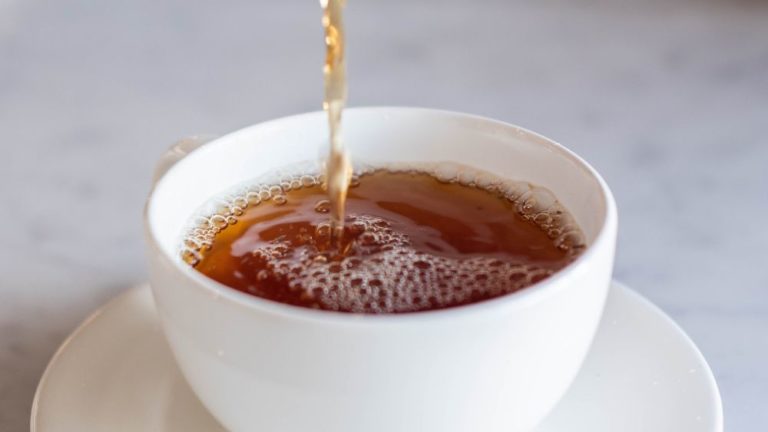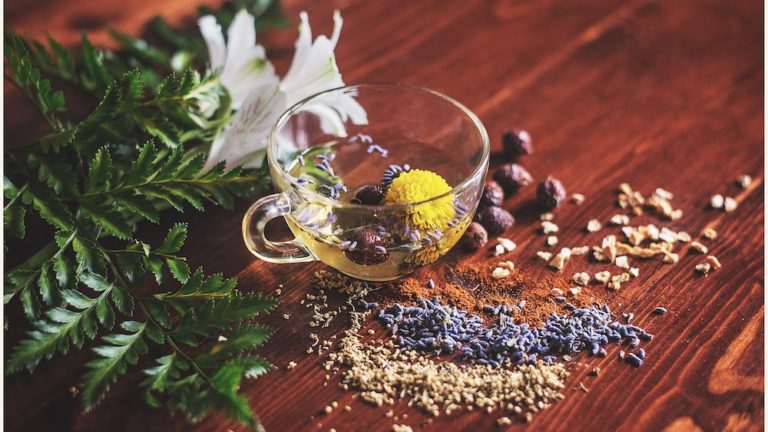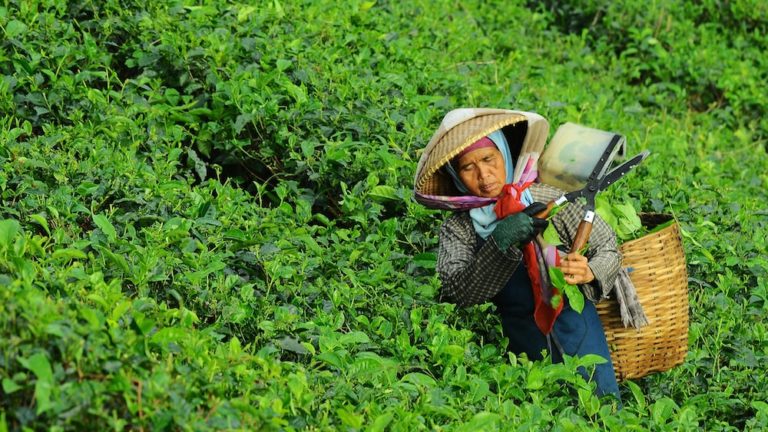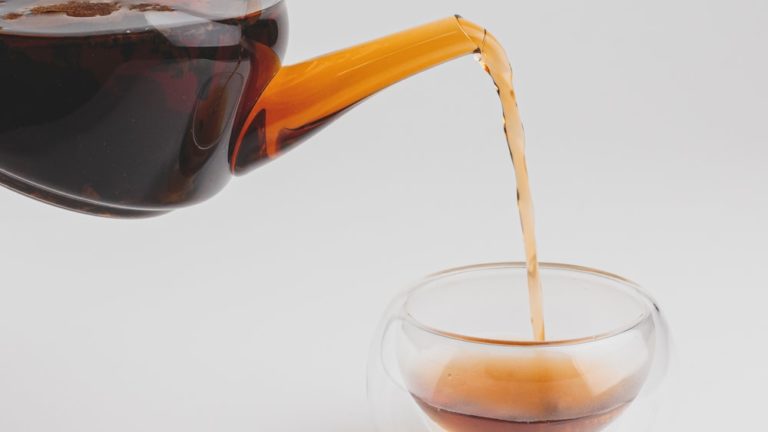Uncover The Secrets Of Which Tea Is Fermented
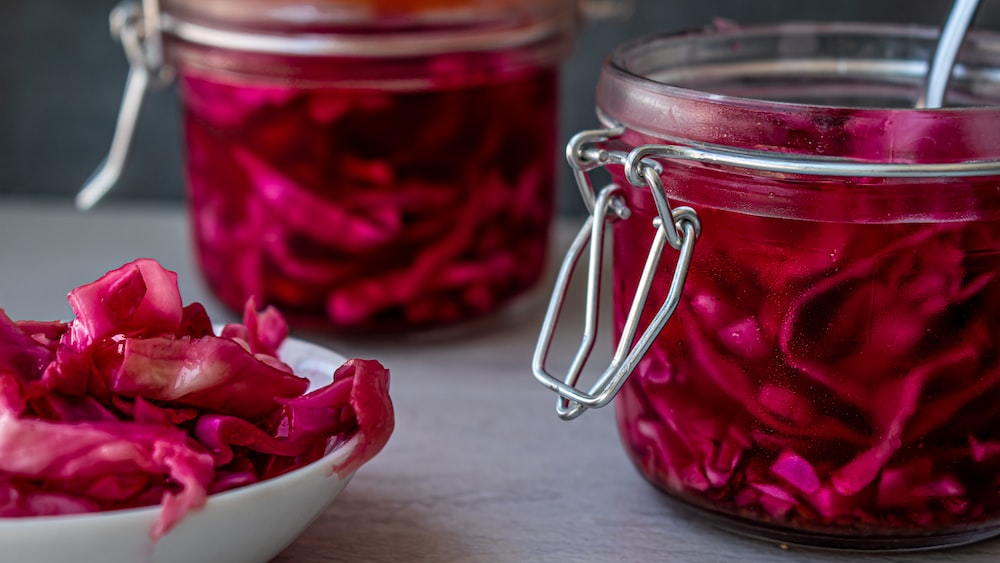
Uncover The Secrets Of Which Tea Is Fermented
Ah, tea. This isn’t just your average cup of joe, my friends. We’re about to embark on a leafy journey deep into the steaming jungles of fermented teas. We all know that tea can be as complex as a fine wine or as mellow as a Sunday morning. But when it comes to which tea is fermented, even the most seasoned tea drinkers may find themselves scratching their heads in delightful confusion.
Now, before you go imagining your tea leaves bubbling away in a darkened cellar like fine champagne, let me guide you through the peek-a-boo garden of fermented teas. You’ll soon see they’re just as much about culture – both the figurative and microbial kind – as they are about flavor. Such teas, like our beloved pu-erh tea, reveal their secrets slowly, unfurling with time and patience… and a bit of artful prodding from tea masters.
Join me, fellow tea enthusiast, and let’s weave our way through the tapestry of teas. We’ll investigate the rich history, tangle with the science, and of course, find out which tea is fermented. I promise to keep the journey light-hearted, peppered with the odd chuckle, because too much seriousness could make the tea leaves wilt – and we wouldn’t want that, would we?
The Fermentation Process in Tea
If the term “fermentation” throws you into a foodie frenzy, thinking of sauerkraut and kombucha, then hold on to your teacups! In the world of tea, fermentation is the backbone of character, a process that transforms the simple tea leaf through a literal change in character. And not just any old transformation – we’re talking an alchemy of flavors that can only happen under the watchful eye of a skilled tea craftsman.
Defining Fermentation in the Context of Tea
In the ever-so-civilized society of tea talk, fermentation is the belle of the ball that we owe our deepest curtsies to. Here’s the tea on tea: fermentation in our leafy world is the process where microbes such as bacteria and yeast have a meet-and-greet with tea leaves, resulting in a harmonious dance of enzymatic reactions and flavor development. This is no mere bubble bath – it’s a complex ritual where leaves morph into something entirely more intriguing.
Some teas, like a young starlet, never experience the aging process, but those which tea is fermented age gracefully, picking up complexity and depth along the way. Think of it as the difference between a bright-eyed adolescent and a worldly, wise sage. Fermentation gives tea its education, instilling flavors as varied as earthy, nutty, fruity, or even a hint of a fine, aged cheese.
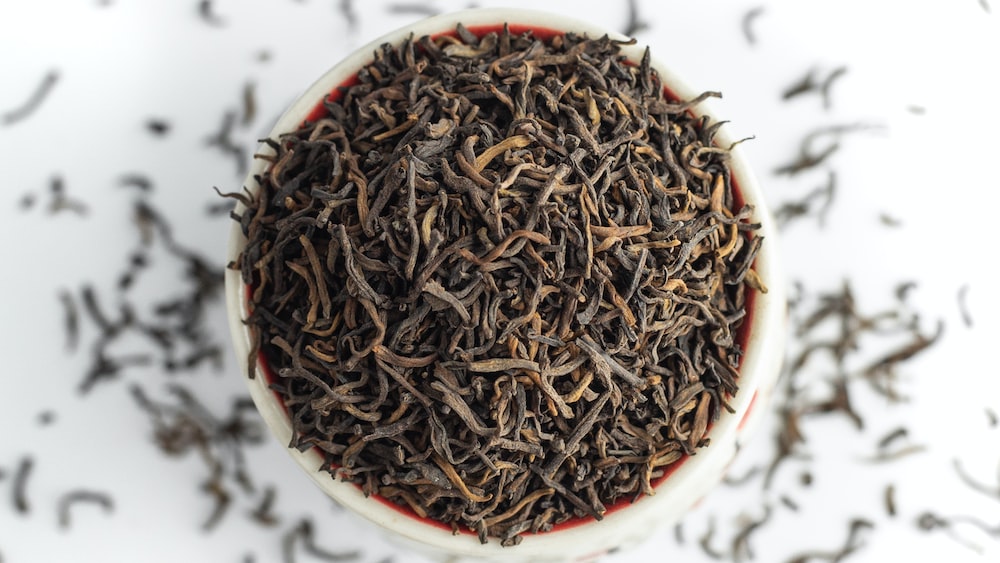
Fermentation in tea is a complex process where microbes interact with tea leaves, resulting in flavor development and complexity, similar to the difference between a young adolescent and a wise sage.
The Difference Between Fermentation and Oxidation
But hold your horses – fermentation isn’t a solo act. There’s a significant but often misconstrued distinction when it comes to fermentation and its mysterious sibling, oxidation. Fermentation involves microbes – it’s a biological process, akin to turning milk into yogurt. In contrast, oxidation is all chemistry, baby – it’s an enzymatic activity where tea leaves get a taste of the open air, basking in its essence to change color and flavor.
Let’s not mix our metaphors or our processes, as easy as it may be for the uninitiated to do. Oxidized teas, like the charming black teas, mature like a portrait in an open gallery. On the other hand, fermented teas are more like a captivating novel, developing plot twists and character depths in the quiet, controlled environment of a library. Pu-erh tea, for instance, masters this enigmatic process with the grace of a ballerina, pirouetting from simple green leaves to a dark tea with a complex profile.
The World of Fermented Teas
Welcome to the exclusive club of fermented teas, a realm where the teas are as diverse as an art gallery collection. Each variety, a distinct masterpiece crafted not just by time but by a process steeped in tradition and modern innovation. Here, teas don’t rust; they bloom with boldness and subtlety, leaving behind simplicity for a wonderland of sensory experiences.
The Unique Characteristics of Fermented Teas
Ah, the allure of fermented teas – it lies in their chameleon-like quality. Each sip whispers a different secret, a new flavor note discovered, a subtle hint of a once hidden nuance unveiled. Imagine a tea that evolves over multiple infusions – a promenade of palates, where each cup is an odyssey, uncovering layers upon layers of depth and complexities.
But these teas don’t just tickle your fancy; they intrigue your intellect. The fermentation it endures fosters a convergence of health and happiness in your cup. As they develop their flavorful personas, these teas impart more than just taste – they offer a repertoire of wellbeing, like a botanical symphony for your senses and your health.
An Overview of Tea Varieties That Undergo Fermentation
Let’s meet the inhabitants of our fermentation forest, shall we? The stars of the show, the ones which tea is fermented, boast an illustrious lineup featuring:
- Pu-erh Tea – The one that wears the crown, aged like fine wine in caverns and caves.
- Dark Tea – A group of fermented teas known for their robust and earthy character, often sharing the spotlight with their pu-erh cousin.
But wait – there’s more! Unbeknownst to many, a few other fermented teas hide in the shadows, waiting for their own drumroll:
- Kombucha – A trendy, tangy beverage that has danced its way into health enthusiasts’ hearts.
- Jun Tea – The lesser-known kin of Kombucha that hails from the highlands.
The world of fermented teas is vast and varied, and these just scratch the surface of their intricacy and appeal.
Fermented teas like Pu-erh, Dark Tea, Kombucha, and Jun Tea offer a diverse and intriguing world of flavors and health benefits.
The Star of Fermented Teas: Pu-erh
When one speaks of fermented teas, it’s a rite of passage to pay homage to the venerable pu-erh tea. This venerated potion of life doesn’t just steep; it breathes history, whispers of ancient trade routes, and murmurs the secrets of emperors. Pu-erh, the virtuoso in the art of fermentation, offers an aria of flavors that matures with grace, transforming tea leaves into dark, rich tapestries of taste.
The Origin and History of Pu-erh Tea
The story of pu-erh tea begins in the misty mountains of Yunnan Province, China, where this distinctive brew has been turning heads and tantalizing taste buds for over a millennium. Rumored to have been the choice drink of emperors and court officials, pu-erh carved its niche in the world of teas as both a luxurious commodity and a folk remedy. Its history is steeped – pun intended – in ancient trade routes, specifically the Tea Horse Road, where the leaves would undergo natural fermentation during the arduous treks through varying climates.
The passing centuries have seen pu-erh tea evolve, but its heritage remains unblemished, as the methods of its production and the rituals of its consumption continue to hold a candle to its storied past. Pu-erh, unlike a whimsical fly-by-night fad, has secured its reputation as a tea that embodies complexity and depth with every sip. Known as hei cha, or dark tea, among the Chinese, pu-erh has always had a special place in the hearts and teacups of those seeking the experiential bridge to history and culture.
A combination of mythology and documented evidence paints pu-erh as a kind of Camellia sinensis that has seen empires rise and fall. Today, it stands as a towering giant, a lesson in resilience, and proof that sometimes, to march forward, we must dance with the voices of tradition. That’s the thing about which tea is fermented; there’s a story in every leaf, a legacy in every brew.
How Pu-erh Tea is Made
Making pu-erh tea is an act of patience and a testament to the mastery of time-honored techniques. The process kicks off with plucking the finest tea leaves, followed by a stage known as sun-drying, which is exactly what it sounds like – spreading out the leaves under the benevolent gaze of the sun until they lose their moisture and my, don’t they just become the most charismatic raisins of the tea world?
After the leaves have basked in enough sunlight, pu-erh takes the road less traveled, fermentation. This is where our star tea diverges from the more conventional black and green teas. You see, pu-erh waltzes through either a ‘natural fermentation‘ process, taking several years in a humidity-controlled environment, or a ‘sped-up‘ journey through a method aptly named ‘wet-piling,’ akin to fast-forwarding nature’s intentions. It is during this crucial stage that pu-erh acquires its unique flavor profile; a symphony of earthiness with a hint of mystery.
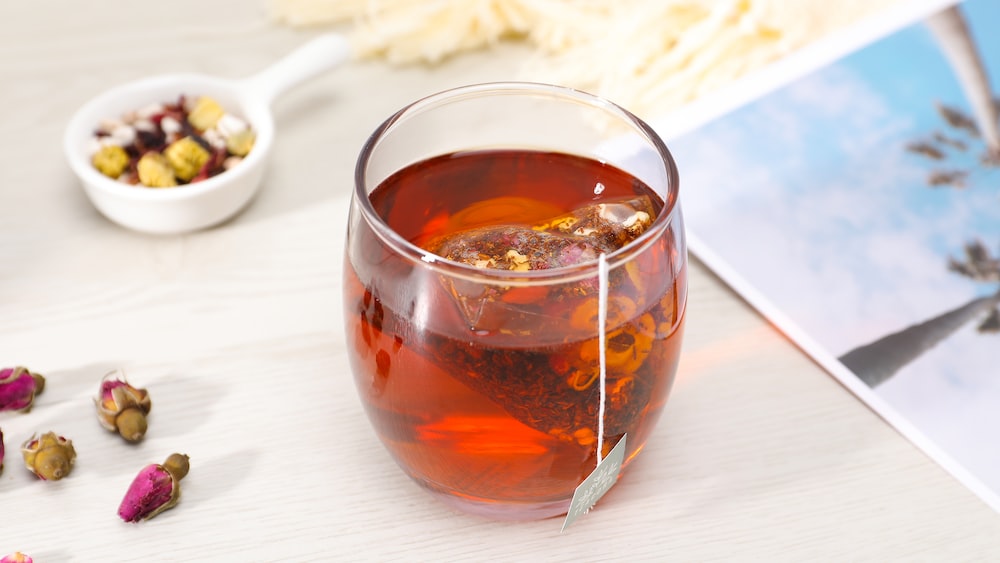
Health Benefits of Fermented Teas
In the lush foliage of healthful brews, fermented teas are the verdant superheroes you’ve probably been seeking all along. Their unassuming leaves hide a cornucopia of wellness benefits, particularly because of the fermentation process they undergo. From your holistic aunt to that friend who’s virtually a walking health food store, everyone’s abuzz about what pu-erh and its fermented cousins can do for our bodies. So the next time you find yourself pondering over which tea is fermented, remember the unseen power of these ancient concoctions.
Probiotics and Digestive Health
Did you know that your gut is essentially a grand ballroom where billions of microscopic guests are constantly shaking hands and tangoing to the tune of your health? When we invite fermented teas to this party, they RSVP with a plus one: probiotics. These beneficial bacteria sway along with your gut’s natural flora, promoting a cheerful digestive system and keeping things moving like a well-oiled machine – or should I say, like a well-steeped pot of tea?
Studies show that these gut-friendly microbes play their role in bolstering immunity, jazzing up one’s mood, and even stepping to the beat of weight management. The fermentation that gives these teas their distinguished taste is just the cuddle party that these helpful bacteria need to thrive. And let’s be real, anything that can cozy up to my tummy peace is a guest I’d happily keep on my speed dial!
Antioxidant Properties and Wellness
When we talk antioxidants, we’re basically gabbing about the body’s personal cadre of superheroes fighting off free radicals – those pesky molecular ruffians bent on cellular mischief. Now, pu-erh tea, swirled gently into your cup, is brimming with such antioxidants, particularly ones known as catechins. This dynamic crew patrols your innards, keeping vigil against heart disease and some sneaky types of cancers.
And wait, there’s more! Sipping on a cup of pu-erh isn’t just about basking in its earthy depths; it’s about giving your body’s defense system an ironclad shield. Studies indicate a link between regular consumption of fermented teas and reduced cholesterol levels, making a compelling case for examining closely which tea is fermented and what each can bring to your health roundtable.
Preparing and Enjoying Fermented Teas
Diving into the world of fermented teas is akin to setting off on an aromatic voyage – the destination, a haven of flavor and well-being. The art of preparing these teas is a sacred rite, echoed through the ages, bringing with it a form of meditative tranquility. It’s a process that beckons the brewer to become an alchemist, transforming liquid to gold.
Brewing the Perfect Cup of Fermented Tea
The alchemy of preparing a sublime cup of fermented tea begins with understanding that time and temperature are your dance partners. Begin by warming the teapot, allowing it to embrace the tea leaves as an old friend would. Then gently introduce water – not furiously boiling but at a serene simmer – to awaken the tea’s dormant complexities.
For pu-erh tea, practice a little ritual called “rinsing” the leaves. Simply pour hot water over them, quickly discard this water, and then proceed to the main steep. This little rite serves a dual purpose: it cleanses the leaves and primes them, readying for the grand steep – a step that takes anywhere from 20 seconds to a minute for the first infusion, with subsequent infusions lasting just a bit longer. Remember, much like indulging in a piece of exquisite chocolate, savoring fermented teas is about taking slow, attentive sips that respect the historic journey of the leaves.
Preparing a sublime cup of fermented tea requires understanding the importance of time, temperature, and the ritual of rinsing the leaves to awaken the tea’s dormant complexities.
Flavor Profiles and Pairing Suggestions
Immerse yourself in the palate-pleasing world of fermented teas and discover a cornucopia of flavors that range from earthy depths to subtle sweetness. Think of Pu-erh as a fine wine, with matured complexity that tantalizes the taste buds with every sip. Now, when savoring this aged beauty, pair it with a rich dessert to balance its robustness, or let’s get a bit cheeky and enjoy it with a slice of pungent cheese – talk about a love story for your mouth!
When brewing tea of the fermented variety, note that its bold flavors can stand up to equally bold foods. If you’re indulging in a cup of Kombucha, its vinegary zest cozies right up to salty snacks, making it a perfect picnic partner. And for a light-hearted affair, sip on a batch of lightly fermented white tea with a side of fresh fruit or delicate pastries, a match that’s as refreshing as a spring breeze.
FAQs
1. What makes a tea fermented rather than just oxidized?
The distinguishing factor that makes a tea fermented rather than just oxidized is the presence of microorganisms such as bacteria and yeast. While oxidation is purely a chemical process involving the tea leaves and oxygen, fermentation involves a biological process that fundamentally alters the tea’s flavor profile and characteristics.
2. Can you list some common types of fermented tea?
Some common types of fermented tea include Pu-erh, offering a rich and earthy taste, and Kombucha, known for its tangy kick. Other notables are dark tea from China and the slightly lesser-known, mild yet complex Jun tea.
3. Are there any health risks associated with drinking fermented tea?
When considering health risks associated with drinking fermented tea, it’s reassuring to know that they are generally considered safe for consumption. However, people with compromised immune systems or those pregnant should exercise caution, and of course, listening to one’s body is always key.
4. How does the fermentation process affect the caffeine content in tea?
The fermentation process can affect the caffeine content in tea, often resulting in a reduction of caffeine levels compared to unfermented teas. However, this can vary widely based on the type of tea and the method and duration of fermentation.
Conclusion
So, we’ve journeyed through the fermentation process, uncovered which tea is fermented, explored eclectic flavor profiles, and discussed the compelling health perks. It’s moments like this when you realize tea isn’t just a drink; it’s a globe-trotting adventure in a cup, brewing up history, health, and harmony.
By now, the aromatic alleyways of this fermented tea discovery should have tantalized both neophytes and aficionados alike. Remember, in the quest to discern which tea is fermented, each sip promises a novel experience – a tale untold, a chapter waiting to unfurl in the warmth of your teapot.
So, raise your cup to the mysteries now revealed and to future brews that beckon with unexplored notes and nuances. And on that thought-provoking note, it’s time I bid you a warm and wonderfully personal goodbye. Keep infusing your days with the simple elegance of a well-steeped life.
With warmth and whimsy, Zoe

